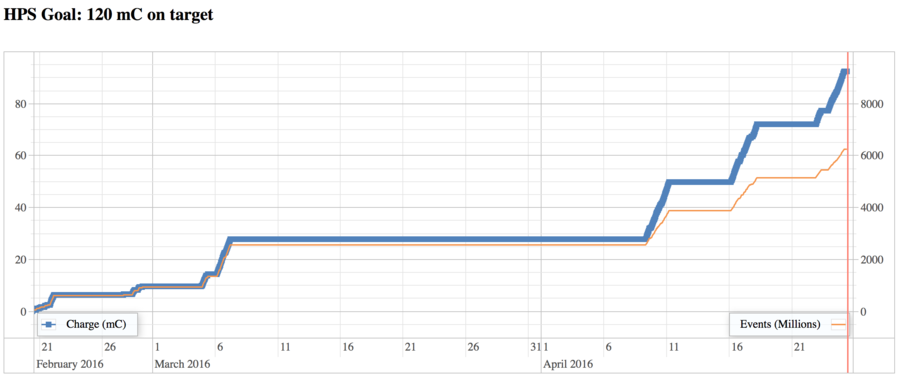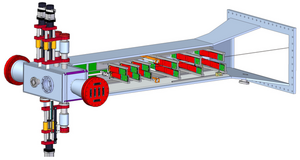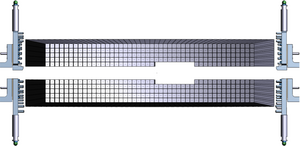Difference between revisions of "The HPS Run Wiki"
Jump to navigation
Jump to search
| Line 367: | Line 367: | ||
!width=250 colspan=2 style="background:#ffdead;" | '''Beamline''' | !width=250 colspan=2 style="background:#ffdead;" | '''Beamline''' | ||
|- | |- | ||
| − | | June | + | | June 12 - July 3 || Rafo Paremuzyan |
|- | |- | ||
| − | | July | + | | July 3 - July 27 || Stepan Stepanyan |
|} | |} | ||
Revision as of 16:26, 7 June 2019
[edit]
Spring 2016 Final @ 2.315 GeV:
Spring 2015 Final @ 1 GeV:
Phone NumbersShift ScheduleShift-Taker's ChecklistHot CheckoutBeam Time AccountingRun Spreadsheet 2019,2016, 2015HPS Upgrade ERR |
Procedures
|
Manuals |
JLab Logbooks
|
HPS 2019 run, June X to August Y'
Beam energy 4.5 GeV
Important: Document all your work in the logbook!
Bluejeans for Run Meetings on DAY and DAY at 2pm
RC: Stepan Stepanyan
- (757) 575-7540
- 9 575 7540 from Counting Room
PDL: Valery Kubarovsky
- (757) 876-1789
- 9 876-1789 from Counting Room
Straight tracks run: June XX, 4:30 AM
Run Plan for June XX - YY, 2019Start close-up of the Hall at 3pm on Friday, June XX
When hall enters Beam Permit, turn on the chicaneEstablish beam to the tagger dump
Bring beam to FC:
Monday at 6:am
Important Notes:
SVT RECOVERY PROCDURES |
General InstructionsDAQ RECOVERYIf DAQ crashed/broken:
Locking up the hall on Fridays
Establishing Acceptable Beam Conditions:
Note: in order to have reliable readings on two important for HPS BPMs, 2H00 and 2H02, beam current should be >30 nA.
Setting up the FSD threshold
hpsrun@clonpc11> /home/hpsrun/scripts/FSD/Calc_FSD_Threshold.exe
|
Every Shift:
|
Every Run:
|
|---|
|
|
| ||||||||||||||||||||||||||||||||||||||||||||||||||||||||||||
.
.
|
Webcams:
|
Accelerator: |
Slow Controls:
|
Online & Offline: |
| System/Person | Pager/Phone Number |
|---|---|
| Run Coordinator | (757) 575-7540 (cell) |
| Physics Div. Liaison | (757) 876-1789 (cell) |
| MCC-OPS | 7048 |
| Crew Chief | 7045 |
| Crew Chief | 9-879-3367 (cell) |
| Program Deputy | 9-876-7997 (cell) |
| Gate House Guard | 5822 |
| DAQ/Online | (757) 869-2188 (cell) |
| SVT | (757) 310-7198 (cell) |
| ECAL | (757) 810-1489 (cell) |
| Slow Controls | (757) 748-6922 (cell) |
| Beamline | (757) 303-3996 (cell) |
| Engineering | (757) 748-5048 |
| Hall-B Floor | 5165 |
| Hall-B Space Frame | 5170, 5171 |
| Hall-B Forward Carriage | 5371 |
| Hall-B Counting Room | 5126, 5244, 5246, 5247 |
| Hall-B Gas Shed | 7115 |



